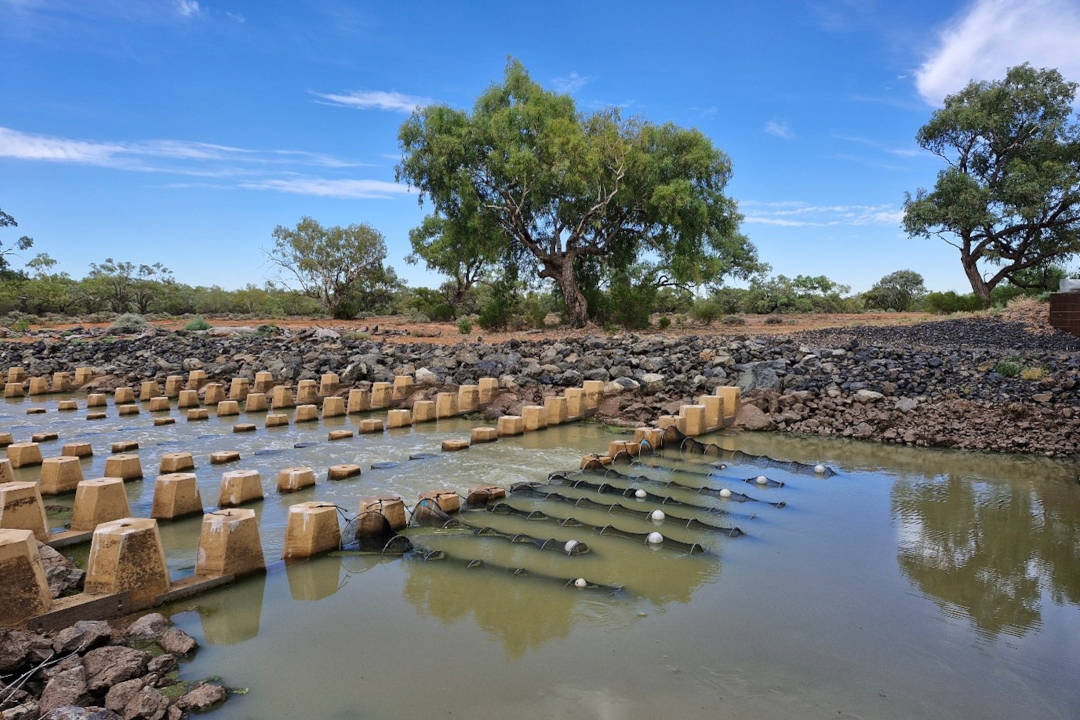Native fish return to the Warrego River
Thousands of native fish are successfully moving both upstream and downstream at Boera and Homestead Dams thanks to new fishways installed as part of the $16 million Toorale Water Infrastructure project.
The project was funded by the NSW and Australian governments and led by the NSW Department of Climate Change, Energy, the Environment and Water (DCCEEW).
Australian fish need to migrate to feed, breed and seek new habitat but due to the introduction of barriers to fish passages, like dams and weirs, fish migration pathways have been impacted, interrupting vital aspects of fish life cycles and leading to accumulations of fish below barriers.
To address this, the Australian and NSW governments upgraded water infrastructure to store less water on the property and allow more flows to pass through the property and connect to the Darling River.
Recent monitoring by the Department of Primary Industries and Regional Development – Fisheries (DPIRD) in December 2024 and January 2025 has shown that thousands of native fish are moving both upstream and downstream through the new fishways. In one 24-hour period, more than 8,000 native fish were counted.
Species identified included golden perch, spangled perch, Hyrtl’s catfish, bony herring and desert rainbowfish. Larval sampling downstream of each fishway also confirmed recent fish reproduction events.
Fishway monitoring is a valuable tool to improve our understanding of fishway designs and their effectiveness in facilitating fish passage. DPIRD Fisheries will continue monitoring fish movement in the Warrego until mid-2026.
Quotes attributable to DCCEEW Director Water for the Environment, Dr Julie-Anne Harty program:
'Toorale had extensive historic infrastructure built to regulate water across the property for agricultural purposes, including storage dams along the Warrego River.
'The water infrastructure was completed in two phases, firstly removing Peebles Dam in 2019 and then modifying Boera and Homestead dams in 2022.
'Fishways were built at both dams so fish can migrate upstream and downstream along the Warrego River resulting in large numbers of fish successfully breeding and migrating.'
Quotes attributable to DPIRD Fisheries Scientist, Dr Laura Michie:
'These are exciting results. The high catch rates of juvenile fish, including golden perch, highlight the importance of systems such as the Warrego for supporting native fish populations in the Northern Murray–Darling Basin.
'It is great to see native fish now migrating through the fishway in both directions, a clear sign that these fishways are operating very well.'
Quotes attributable to DCCCEEW Senior Wetlands and Rivers Conservation Officer, Matt Miles:
'Historically, the fish passage past Boera Dam was only possible under high flow conditions.
'The upgrades have significantly improved in the number of opportunities and length of time fish can move past these structures.'

Fishways on the Warrego River past Boera Dam